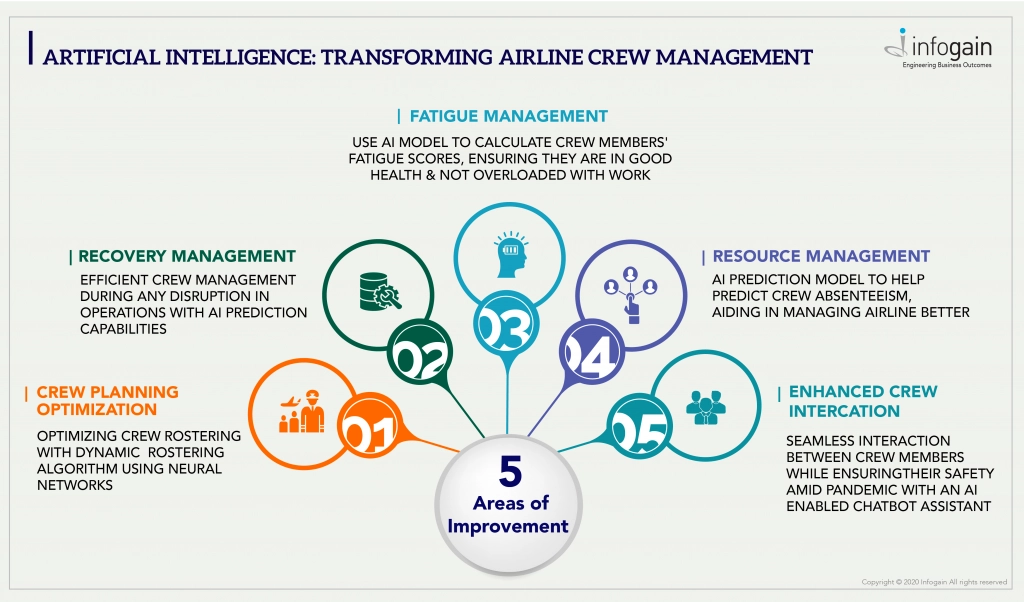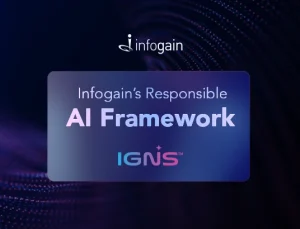- Posted on : January 13, 2021
-
- Industry : Travel and Hospitality
- Type: Blog

In our previous blog on Airline Crew Management, we had addressed three questions that need to be asked to identify innovation opportunities. While these questions are still pertinent, a lot has changed since then, especially with the pandemic.
And as the pandemic lockdowns and travel restrictions gradually relax, the industry is slowly getting back on track, at the same time incorporating changes that will help travelers feel safe. The focus is on the customer's safety, contactless travel experience, and hassle-free customer services. But what about the other variable in this equation, namely the airline crew? Their experience has a direct impact on travelers, and managing crew activities is one of the highest operating expenses for any airline. While continuing traveler-focused efforts, airlines also must invest in transformational technologies to optimize cost and bring efficiency in crew management.
At Infogain, we believe AI can be the answer. It has immense usage leveraged by the airline industry in areas of revenue management, customer experience, sir safety, feedback analysis, messaging automation, in-flight sales, fuel efficiency optimization, and crew management.
Here are some areas where AI can be used to improve crew management:

Crew Planning Optimization: Airline crew planning broadly consists of Crew Pairing and Crew Roster. The pairing is done on basis of flight segments so that cost and crew covering flights are minimized. And, individual crew members are rostered (assigned) with a monthly schedule, using a computer program Optimizer.
But amid the pandemic, crew members may face emergencies and may not always be available; thus standard frameworks to design crew rosters might prove inefficient. With AI, a dynamic rostering framework using Neural Network and classification algorithm can be created which will allow the crew to receive a response as soon the request is expressed. The framework uses past data to analyze patterns and its efficiency increases over time as it learns more and more with data. This data can further optimize crew planning by ensuring crew members operate on different fleets and saving requalification training costs. The proposed system could lead to faster response, enhanced crew satisfaction, and prior entry of fixed activities by the crew in roster planning. According to The EURO Journal on Transportation and Logistics, the dynamic algorithm grants 22% more requests while the same workforce is being utilized to operate the flight schedule.
Recovery Management: Any disruption in flight operations has a cascading effect on whole airline operations. Disruption can be due to technical failure, natural disaster, or any other emergency. In such scenarios, AI can help in recovery management. Using Neural networks to build and train a model using a classification algorithm, a new roster plan can be created for the next few days in the shortest time possible. Also, prediction capabilities can help understand an aircraft’s performance statistics and predict chances of technical failure and take proactive actions to resolve the issue.
Fatigue Management: Normally fatigue management was used to avoid operational delays and adverse impact on crew members' health, while also helping ensure traveler satisfaction. During the COVID-19 pandemic, fatigue management has become more important to ensure crew members are in good health and not overloaded with work.
Using artificial intelligence and data analytics, a model can be created that takes inputs like duty start and end time, flight duration, number of flights flown during the duty, etc. to calculate fatigue score and rate it on a scale. The model can be developed such that it calculates fatigue score every 15 min with real-time inputs and this score can also be fed into the crew roster for more efficient planning. Solutions such as these need now be fully embraced.
Resource Management: Flight operations can get interrupted due to several scenarios; any of the crew members is absent or weather conditions are unfavorable or any health emergency is becoming an everyday affair in airline operations amid the COVID-19 pandemic.
AI can help with resource management; for example, a prediction system to predict and track absenteeism can improve operations. Neural Networks and Adam Optimization algorithm can be used to develop and train such prediction models using past inputs such as absence records, the reason for leaving, month of absence, day of the week, seasons, age, roster, etc. to predict absenteeism. This will also help in estimating the number of reserve crew members and better manage their duty patterns to limit disruptions. Overall, this system optimizes crew members and on-schedule flights, thereby reducing interruptions and increasing customer satisfaction. And in the long run and as the model evolves itwill also be an effective resource management system.
Enhanced Crew Interactions: AI can help improve crew interactions while ensuring safety especially when crew members swap duty. A chatbot assistant with AI and data analytical capabilities, using Natural Language Processing (NLP) is the perfect technology to enable airlines with these capabilities. The data includes crew members' details, shift timings, availability, planned leaves, etc. which the application to analyze and make suggestions on crew members available to swap duties.
The COVID-19 has forced many organizations to think differently, and this is no less the case for the airline industry. AI can easily be a transformational technology in airline crew management, converting possibilities into reality.
Talk with us today about using AI in your crew management operations.







